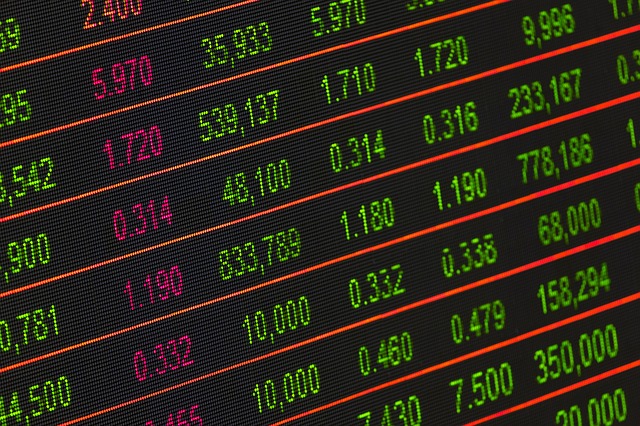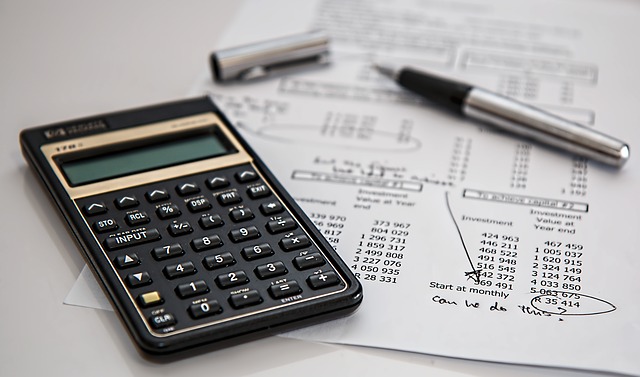Top Blue Chip Stocks, Dividend Stocks and more
View a list of top stocks on NASDAQ and NYSE
Stock Forecasts, Price Charts, Annual Reports and More
Stock Forecasts, Technical Analysis, Price Charts and More
Best Stocks Under $100
More Stock Tools
Hottest Stocks Right Now
The best dividend stocks long term pay steady, predictable dividends that grow over time, have fortress balance sheets and are cash rich.
Many investors like dividend stocks because they offer regular cash payments. Assuming that the company does well, you can expect up to four payments per year. (Some companies make monthly or irregular dividend payments, but they are rare arrangements.)Getting a regular payment has obvious appeal. Before you start buying shares, though, you should take some time to learn about the pros and cons of dividend stocks long term. Then, you can make informed decisions about the companies that will add value to your investment portfolio.
Why Invest In Dividend Stocks?
You can find several reasons to invest in dividend stocks. Many investors prefer companies with dividend stocks because they believe that the organizations have more transparent operations.Instead of spending profits on stock buybacks, the companies have incentive to send a share of profits to their shareholders.
The dangers of buybacks are evident during "bust periods" when companies who have used cash to buy back shares discover they are short of liquidity when business dries up. However, companies who are cash rich and pay a share of profits to stockholders often have a long history of steady cash flows.
Dividend Stocks Often Resist the Effects of Bear Markets
Investors also tend to hold onto dividend stocks for several years. You won’t find many day traders buying these stocks.Because other investors have a long-term perspective, stock prices tend to remain fairly stable. They will move up and down during the days, weeks, and months, but they rarely experience the wild swings that other stocks experience. The stability helps to ensure regular returns and lowers the risk of your portfolio.
The predicability of payments helps share prices to maintain a steady value. Even when markets get extremely bearish, your shares probably won’t see the boom and bust that happens to other companies.
The value may still fall, but the impact typically doesn’t hurt dividend stocks as much as shares in companies that don’t offer dividends.
Reinvesting Dividends Can Lead to Significant Growth
If you’re in or near retirement, then you may want to use your stock dividends to pay for your lifestyle. If you have a decade or more until retirement, you can reinvest your dividends to see faster growth.Your dividend is a fixed payment, so dividend yields decrease as share prices increase. The opposite is also true. Falling share prices increase dividend yields.
Dividend checks may not seem like much at first. For example, owning one share of Johnson & Johnson these days will only give you about $4 per year. Obviously, that’s not going to make a significant impact on your current lifestyle.
Now, consider what happens when you own 10 shares in Johnson & Johnson. You get an annual dividend of about $40. Over about three years, your dividend checks will pay for another share in the company.
As long as you keep reinvesting your dividend checks, your portfolio will experience exponential growth. After several years, you will see that your reinvestments make a big difference in your overall wealth.
Reinvested dividends matter so much that Professor Jeremy Siegel says they account for up to 95% of market gains over much of the past century.
How to Find the Best Dividend Stocks Long Term
Not all dividend stock companies will give you the same level of return. Ideally, companies commit to a specific dividend payment to reward investors for purchasing shares.Some companies, however, don’t follow through with their commitment. When Occidental Petroleum Corp. (OXY) lost nearly 90% of its value, the company cut its dividend from $0.79 per quarter to $0.01 per quarter. No one can benefit from a paltry $0.04 dividend per year - unless maybe you're a billionaire and own millions of shares.
When choosing the best dividend stocks for long term investing, look for companies that have histories of paying the dividends they promise without shirking their financial responsibilities.
Of course, even companies that honor their promises could stop paying dividends when they go through long periods of decline. A company cannot pay you when it doesn’t have enough money. They will always choose to stay operational in hopes that they can recover. That may happen with Occidental Petroleum in the future. If the company rebounds, it could return to its original agreement.
Because you can’t benefit from promises, pay close attention to a company’s stability. Does it have a dominant market share that protects it from rivals? Has it paid consistent dividends during periods of booms and busts?
You can never know for certain that you’re making the right choice, but you can gather the knowledge needed to make an informed choice. If a company has paid dividends for several decades, that’s a good indicator that it will probably do the same even during difficult times.
Can I Buy a Dividend ETF?
Some exchange-traded funds (ETFs) pay their investors dividends. A small number even offers monthly distributions that you can immediately reinvest or start spending. Most ETFs that pay dividends do so on a quarterly basis, so it’s a real advantage to choose one with monthly payments.When buying a dividend ETF, look for funds that own reliable companies which consistently beat expectations.
The following dividend ETFs have solid reputations that make them excellent options for most investors.
WisdomTree Total Dividend Fund
WisdomTree Total Dividend Fund’s top holdings include:- Microsoft Corp. (MSFT)
- Apple Inc. (AAPL)
- AT&T Inc (T)
- Exxon Mobil Corp (XOM)
- JPMorgan Chase & Co (JPM)
- Johnson & Johnson (JNJ)
- Verizon Communications Inc. (VZ)
- Chevron Corp. (CVX)
- Philip Morris International Inc. (PM)
- Pfizer Inc. (PFE)
WisdomTree LargeCap Dividend Fund
WisdomTree LargeCap Dividend Fund usually costs $90 to $100. It’s top 10 holdings include:- Apple Inc. (AAPL)
- Microsoft Corp. (MSFT)
- AT&T Inc. (T)
- Johnson & Johnson (JNJ)
- Verizon Communications Inc. (VZ)
- Exxon Mobil Corp. (XOM)
- Pfizer Inc. (PFE)
- Procter & Gamble Co. (PG)
- AbbVie Inc. (ABBV)
WisdomTree SmallCap Dividend Fund
You don’t need a lot of money to invest in a dividend ETF. Historically, you could frequently buy into WisdomTree SmallCap Dividend Fund for under $50.With such a relatively low price, you can’t expect the ETF to pay large dividends. Most recently, dividends paid were $0.76.
While that’s a small amount of money, it’s roughly proportionate to the dividends paid by the higher-priced WisdomTree ETFs. If you buy enough shares, you could make a tidy sum from the SmallCap fund.
Do Dividend Stocks Beat the Market?
Dividend stocks often beat the market, but you still need to make careful choices to make sure you get a strong return on your investment.In the long term, dividend stocks often beat the market. Even as the market fluctuates, they keep generating revenue that leads to regular dividends and increased stock prices.
Coca-Cola (KO) is a good example of a dividend stock with a respectable growth rate. Between 2015 and early 2020, Coca-Cola shares grew from about $42 to $60.
The COVID-19 pandemic knocked the value a little below $40, but the price rebounded to $49 within weeks. You can expect to see fluctuations like that in practically any stock. An extreme hit to the global financial system will always cause disruptions.
Despite the brief shortcoming in Coca-Cola’s stock value, the company has increased its quarterly dividend from $0.40 to $0.41. That’s an exceptional amount for stock that often costs less than $55 per share.
There are times, especially short term, when holding dividend stocks long term might not beat specific parts of the market. For example, the value of Zoom Video Communications (ZM) shares grew tremendously since the pandemic forced millions of people to work from home.
In March, when the United States first started to pay close attention to the pandemic, Zoom stock hovered around $100. As more companies realized that they needed a tool that would help them operate without meeting in person, the stock’s value rose quickly. Within months, it reached nearly $300.
Some savvy investors saw the growing value of Zoom and similar companies. Anyone too focused on investing in long-term dividend stocks may have missed the opportunity to purchase Zoom shares before they doubled in value.
Risks of Investing In Dividend Stocks Long Term
There are a lot of good reasons to invest in dividend stocks long term. You can earn passive income, reinvest your payments, and get reliable returns from companies with long histories of performance.No investment option comes without risk, though. Even the most reliable company could falter when put in the wrong situation.
It’s Difficult to Guarantee a Dividend Payment
For the most part, companies honor their agreements to pay dividends. Can they truly promise that they will never cut payments, though? That’s difficult to imagine.Even if a company continues to pay dividends during difficult times, it may cut its payments significantly.
Most dividends rely on pretty small percentages. Cutting so much as a few points from your payment could make your investment goals harder to achieve.
The problem becomes even more serious when you rely on dividend payments and reinvestments to fund your retirement.
If a financial downturn happens right before or during your retirement, you could lose money that you thought would cover your expenses in retirement.
Interest Rate Changes Can Affect Stock Prices
Low interest rates make it reasonably easy for companies to keep their overheads low, even when they need to borrow money.As long as the Federal Reserve keeps its rate low, lenders will do the same. Eventually, the Federal Reserve will decide that the economy is strong enough to shoulder a higher interest rate. At that time, you can expect lending to become more expensive.
Companies who have been borrowing a lot to get through difficult times may suddenly find that they need to pay higher loan amounts - especially on shorter term debt maturities.
As that cuts into their profits, their share values could fall. Interest rates certainly aren’t the only factor at play, but it matters quite a bit depending on how much money the company owes.
As share prices drop, your dividend payments may also fall. Now, you have to deal with two problems. You lose money from the lower share value, and you lose money because your dividends get smaller.
Even if a company doesn’t slash its dividend payout ratio, you may still get lower payments until the share value improves.
List of Best Dividend Stocks Long Term
When choosing dividend stocks long term, look for companies that dominate their markets and have long histories of good performance.You can save time by exploring dividend stocks in certain areas of the economy. Sectors to research include:
- Consumer staples
- Healthcare
- Industrials
- Utilities
- Consumer discretionary
Consumer Staples
Consumer staples include the products that most people use daily or weekly. They include items like food and hygiene products. Within this sector, look at companies like Coca-Cola (KO), Procter & Gamble (PG), Colgate Palmolive (CL), and Sysco (SYY).These are some of the most secure investments that you can make. Coca-Cola has been the most popular beverage company for decades.
Procter & Gamble makes products like Crest toothpaste and Dawn dishwashing liquid. Colgate Palmolive makes toothpastes, soaps, and other household necessities. Sysco sells a wide variety of meats, dairy products, fruits, vegetables, and other foods.
Healthcare
Not all healthcare companies stand out as obvious choices for long-term dividend stocks. The first problem is that few of them offer dividends. Secondly, their values tend to fluctuate wildly.Johnson & Johnson is an exception. Its shares have not experienced the wild turbulence of a growth stock like Zoom.
During 2019, the company made one quarterly payment of $0.90 and three payments of $0.95. The second quarter of 2020 showed an even higher payment at $1.01.
Industrials
Most people probably know Stanley Black & Decker (SWK) for making household items like vacuum cleaners.Really, the company makes most of its money from tools, engineered fastening, and parts necessary for infrastructure.
Investors can expect dividend payments of about $0.69 per quarter.
Parker Hannifin (PH) manufactures a wide range of parts and equipment for the aerospace industry. It also makes air filters, pressure regulators, and other industrial equipment.
You may not know the company’s name, but you probably have some of its products in your home or vehicles. Recent history shows annual dividends of $3.52.
Utilities
Everyone needs utility companies, so they don’t carry much risk. It helps that courts usually rule in favor of utility companies.When California residents filed a suit against PG&E for negligence that contributed to deadly wildfires, a bankruptcy judge decided to block the lawsuit. That’s potentially bad for consumers, but it’s good for investors.
When looking for reliable dividend stocks in the utilities sector, check California Water Services and American States Water Company.
California Water Services (CWT) usually pays dividends between $0.18 and $0.21. That’s a decent return considering that shares usually costs under $50.
American States Water Company (AWR) has a higher payment that’s usually a few cents above or below $0.25, which comes to $1 per year. Again, that’s a decent return since a share in the company costs about $76.
Consumer Discretionary
Consumer discretionary spending doesn’t respond as negatively to economic downturns as you might expect.Lowe’s, Altria, and Hormel Group have maintained relative balance during the pandemic. Many people spent their stimulus payments on products made by these companies. Future stimulus payments could help even more.
Investing News

Why Is CoreWeave Stock Down So Much?
AI cloud computing business CoreWeave (NASDAQ:CRWV) has been through a remarkably volatile year. Though the stock has roughly doubled since going public early in 2025, its current price of $78.87 is far below the 52-week high of $187.00 it reached in June. Why is CoreWeave stock down so much since the middle of the year, […]

Why Did Stan Druckenmiller Buy MercadoLibre Stock?
In Q3, billionaire Stan Druckenmiller bought about 4,620 shares of Latin American eCommerce giant MercadoLibre (NASDAQ:MELI) through his Duquesne Family Office. Often described as the Amazon of Latin America, MercadoLibre has been a significant growth business for many years. With share prices having retreated below $2,000, however, MELI is well below the average price of […]

Is DocuSign Stock Undervalued?
Digital signature software business DocuSign (NASDAQ:DOCU) has been struggling over the past year as a market that’s generally friendly to tech firms has surged upward. Shares of DOCU are down more than 30 percent in the past 12 months, despite the business already being profitable and still posting respectable growth numbers. Is DocuSign undervalued now, […]

Is SentinelOne Stock Undervalued?
Cybersecurity major SentinelOne (NYSE:S) has struggled over several years, delivering very large losses to the shareholders who purchased it early on. Peaking at over $75 per share in 2021, S has gradually lost ground and now trades below $15. In the last 12 months, SentinelOne’s struggles have continued, with shares losing a further 33.7 percent. […]

Is Broadcom Stock on Sale?
Chip and software maker Broadcom (NASDAQ:AVGO) has been among the best stocks to own over the past couple of years as demand for AI chips has pushed share prices quickly higher. Though AVGO shares are still up more than 55 percent for the year, they have come somewhat down off of their November highs and […]

Is Bloom Energy The Best Stock to Buy Now?
Shares of energy startup Bloom Energy (NYSE:BE) have advanced by 250 percent in the last year as AI data centers have pushed new energy technologies to the forefront of the investment world. Even with such large gains under its belt, there could still be more room for Bloom Energy to generate additional returns. Is Bloom […]
The #1 Stock Analysis Tool to Make Smarter Buy and Sell Decisions
Get started at Financhill, the #1 investment research platform that is your one-stop shop for finding the best trade ideas today.
-
Top Rated Stock Ideas
Financhill Stock Score is a proprietary stock rating engine that independently evaluates every company based on fundamental, technical, and sentiment criteria so you can find the highest rated stocks in the S&P 500, NASDAQ and NYSE. -
Best Stock Tools Platform
Whether you are looking for the best blue chip stocks, top dividend stocks, most shorted stocks, cheapest stocks today, highest dividend stocks or best stocks under $50, Financhill has got you covered and has so much more. -
Stocks Set To Soar & Crash
Financhill spots seasonal patterns in thousands of stocks so you can easily screen for the best stocks at this time of year. Want to know what stocks could rise 11% over the next 7 weeks with 91% accuracy based on past history? Our Seasonality Screener will surface the hottest stocks right now.
Featured in:






